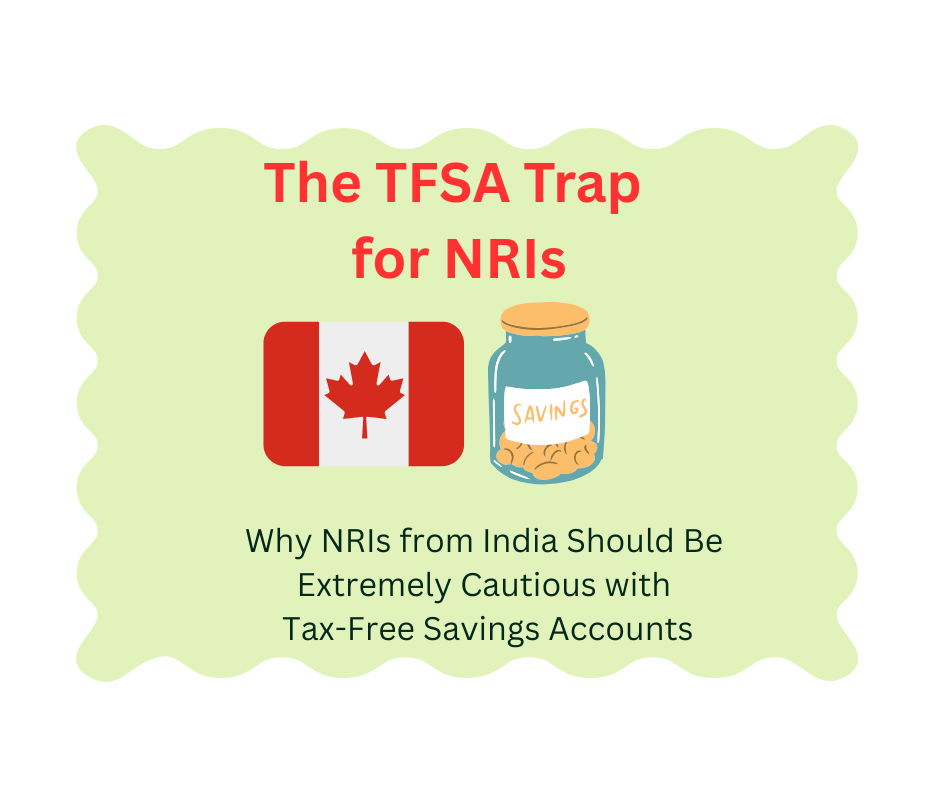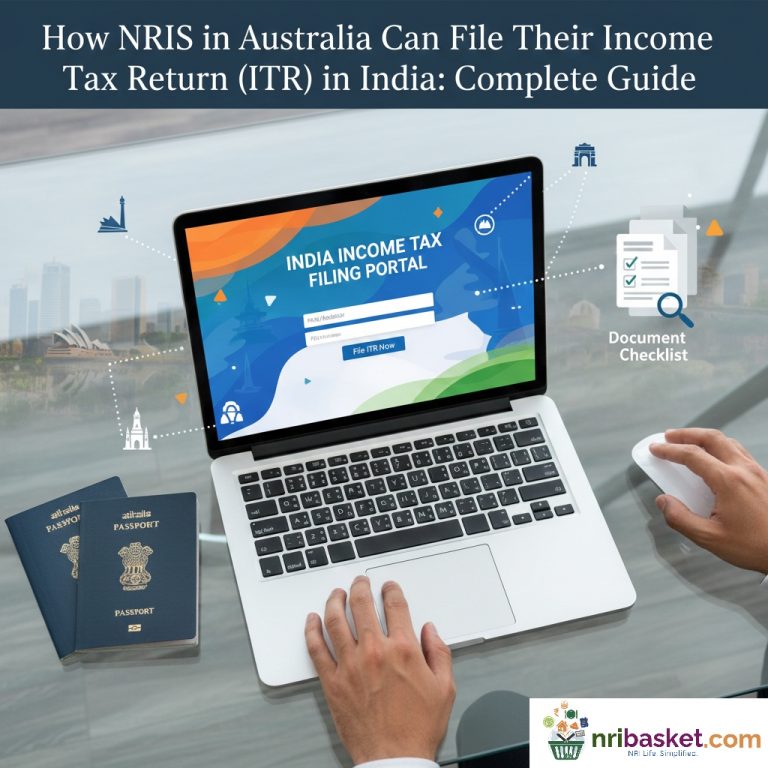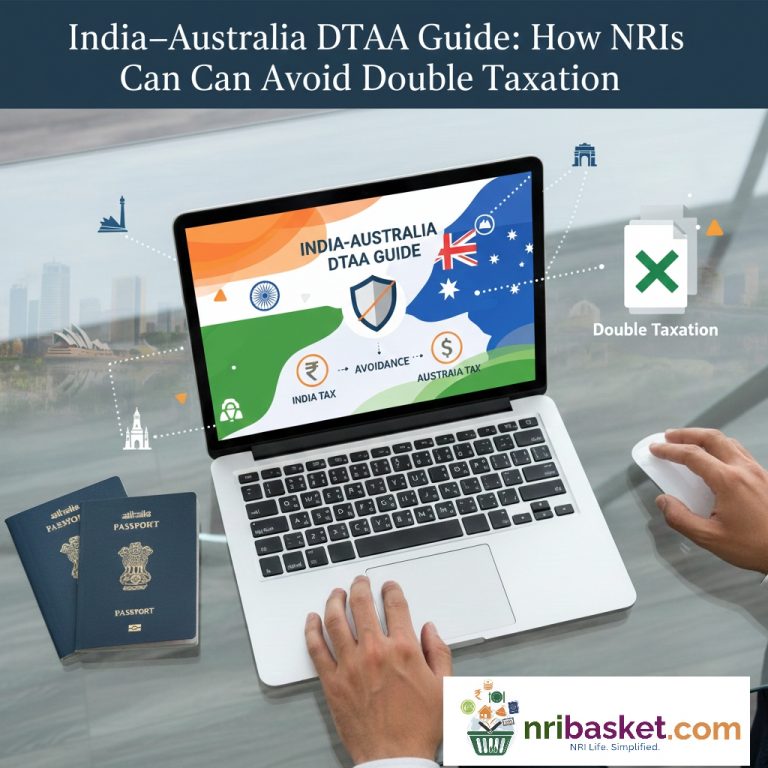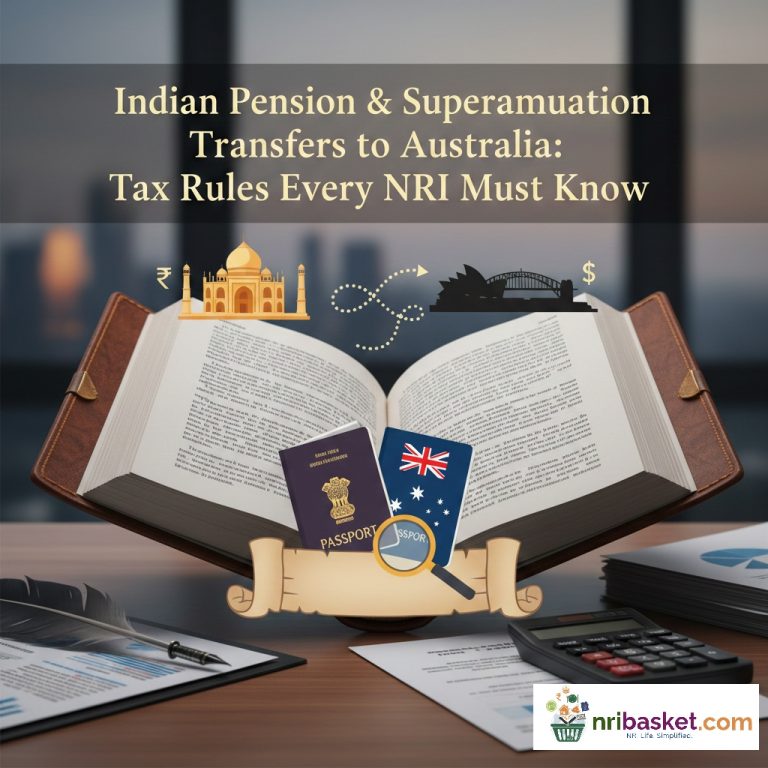
The TFSA Trap
The TFSA Trap: Why NRIs from India Should Be Extremely Cautious with Tax-Free Savings Accounts
Learn why NRIs from India should be cautious with TFSA accounts. Understand tax rules, non-resident penalties, withdrawal rules, and how to avoid CRA issues when living outside Canada. Keywords: TFSA for non-residents India, NRI TFSA implications.
The Tax-Free Savings Account (TFSA) is one of Canada’s most popular investment tools, but it becomes a tricky issue when you leave the country. Many Non-Resident Indians (NRIs) who once lived in Canada are unsure whether they can keep, use, or contribute to their TFSA after becoming non-residents. This guide answers the most common questions about the TFSA for NRIs, explaining how the CRA, Indian tax laws, and double-taxation rules apply. If you’ve moved back to India or to another country, it’s crucial to know how to manage your TFSA wisely to avoid penalties or unexpected taxes.
Have a question or want us to add your scenario?
Tell us what you need — we’ll update this guide and answer publicly so other NRIs can benefit. Your question may be featured in the next update.
30 FAQs on TFSA for NRIs from India
Long Answer: The TFSA lets Canadian residents save or invest money, and any income—interest, dividends, or capital gains—is tax-free in Canada. However, you must be a Canadian resident to contribute legally.
Long Answer: Once you become a non-resident, you may keep your TFSA open, and the investments inside can continue to grow tax-free in Canada, but you cannot add new funds to it.
Long Answer: The CRA prohibits contributions to TFSA once you become a non-resident. If you do, you’ll be charged a 1% penalty per month on the amount contributed until it’s withdrawn.
Long Answer: A 1% monthly tax applies on the over-contributed amount until it’s withdrawn. You must also file a special CRA form to report and fix the over-contribution as soon as possible.
Long Answer: The Indian Income Tax Department doesn’t treat TFSA as tax-exempt. Any gains, dividends, or withdrawals from TFSA are taxable in India if you are an Indian tax resident.
Long Answer: Withdrawals from a TFSA are not taxed in Canada, even for non-residents. However, your country of residence, such as India, might tax those withdrawals.
Long Answer: The CRA determines residency based on ties such as home, family, and employment. Once you file as a non-resident, your TFSA contributions must stop immediately.
Long Answer: Your contribution room remains but stops accumulating while you’re a non-resident. When you return and regain Canadian residency, it resumes.
Long Answer: Withdrawals can be freely transferred to India, but once withdrawn, you can’t re-contribute that amount until you become a resident again.
Long Answer: Since TFSA is not recognized as tax-exempt in India, any capital gains, interest, or dividends earned are taxable according to Indian income tax laws.
Long Answer: You can keep it open, but ensure no new contributions are made. If the balance is small, some prefer closing it to simplify tax reporting in India.
Long Answer: Even though Canada doesn’t tax TFSA income, you must include the earned income in your Indian ITR if you qualify as an Indian tax resident.
Long Answer: The Canada-India DTAA doesn’t provide relief for TFSA income because it’s not considered a “retirement” or “pension” plan. So India can tax it fully.
Long Answer: You can keep your TFSA under your name and authorize a Canadian financial representative to manage it, provided no new contributions are made.
Long Answer: CRA levies a 1% monthly tax on the excess contribution until it’s withdrawn. You also need to submit form RC243 to report and correct the issue.
Long Answer: The CRA considers you non-resident if you cut significant residential ties with Canada, like selling property, moving family, or starting tax residency elsewhere.
Long Answer: You can keep existing TFSA investments in stocks or ETFs, but avoid new trades that might count as “carrying on a business,” which could be taxable even inside TFSA.
Long Answer: Canada shares financial account details with India under the Common Reporting Standard (CRS). TFSA balances and earnings may be disclosed automatically.
Long Answer: Once you become a Canadian tax resident again, you can reopen or continue your TFSA, and contribution room resumes from the next calendar year.
Long Answer: Losses inside a TFSA are not deductible for tax purposes in either Canada or India.
Long Answer: CRA might still track your residency via tax returns, but if you keep contributing unknowingly, you’ll face penalties for the non-resident contributions.
Long Answer: File CRA Form NR73 to declare non-residency. Once accepted, your TFSA contribution privileges stop immediately.
Long Answer: TFSA ownership is individual. You can withdraw and gift the money, but the spouse must use their own TFSA contribution room to invest it.
Long Answer: If you name a spouse or other person as beneficiary, the TFSA value transfers tax-free in Canada, but the inheritor may owe taxes in India.
Long Answer: TFSA has no yearly filing, but if you over-contribute or owe taxes on it, you must submit a TFSA return to CRA using Form RC243.
Long Answer: Financial institutions require updated residency and tax status under CRS, so when you change your address or tax ID, they update your TFSA status.
Long Answer: You can withdraw TFSA money from anywhere using online banking, but funds are received in your Canadian bank account before transferring abroad.
Long Answer: TFSA is a Canadian account, so it doesn’t change your NRE/NRO classification, but income from TFSA must be declared in your Indian tax return.
Long Answer: Keeping an existing TFSA open is legal. The only rule is: don’t contribute while you’re a non-resident.
Long Answer: The smartest move is to keep your TFSA investments growing passively, avoid new contributions, and report income in India if you’re a resident there.




